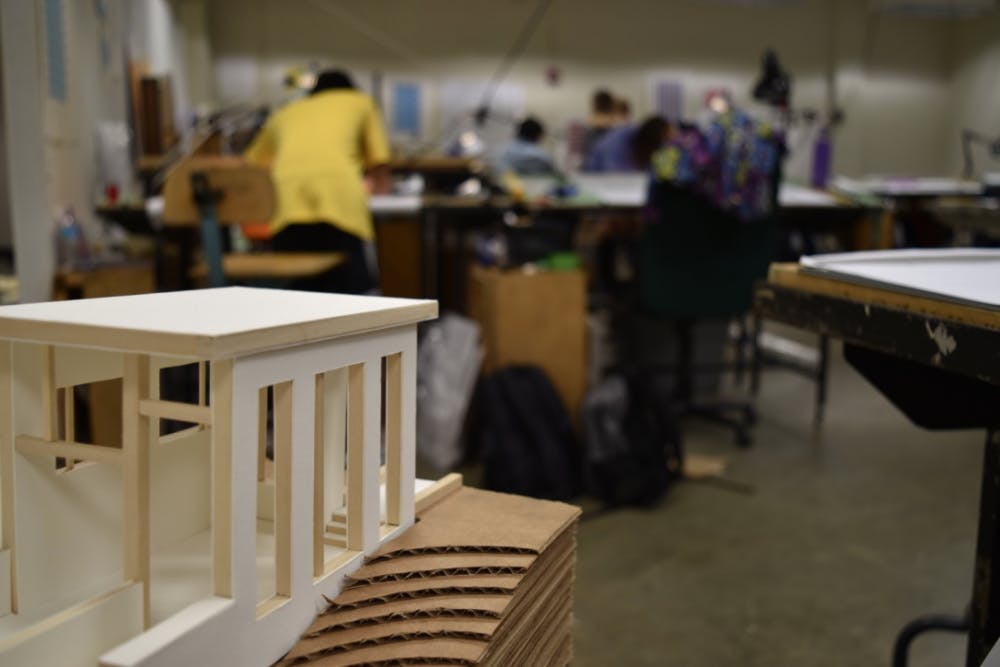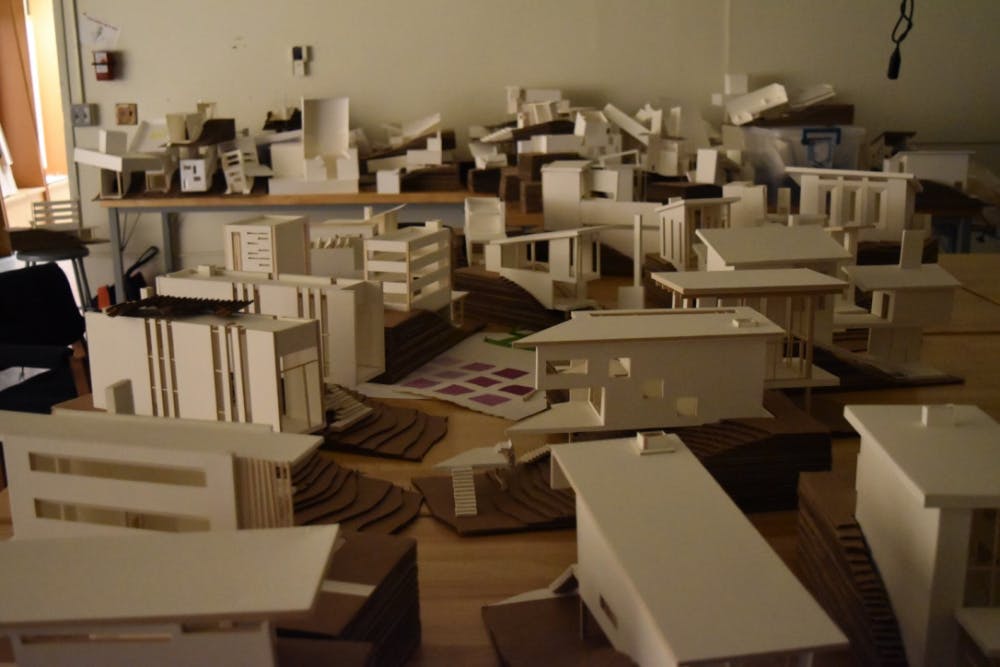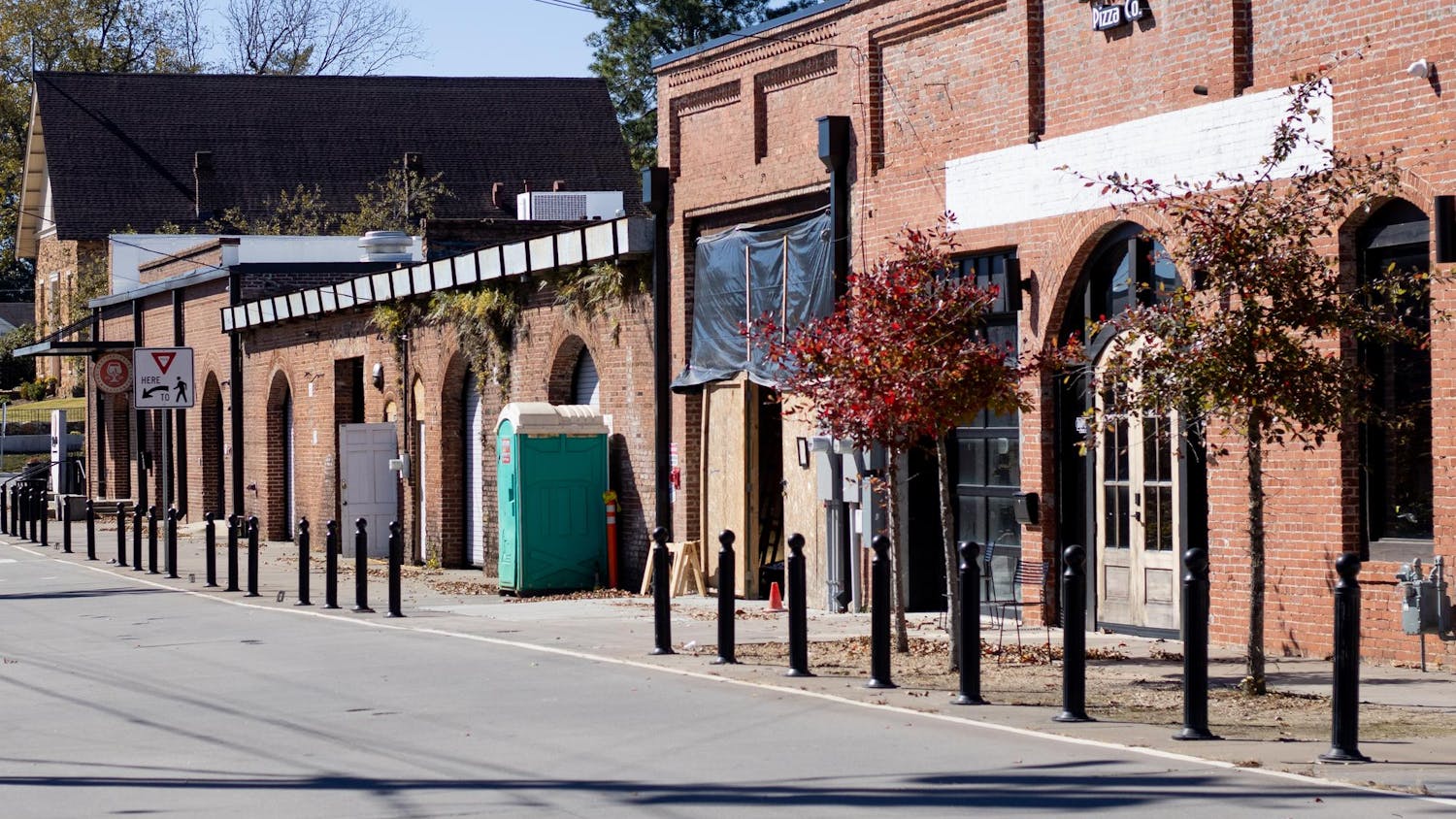For one specific group of students, summer is the most demanding semester they have had in school so far.
Dudley Hall, home of the Auburn University School of Architecture, Planning and Landscape Architecture, is rarely empty during the summer due to a CADC program and tradition for architecture majors, the Summer Option First Year Program.
Freshmen architecture majors are placed in one of two first year programs. One, called the Foundation Unit, takes place during the school year in which students work on studio class projects while taking other core curriculum classes. These students commit to 14 hours of actual class time per week in “ARCH” classes alone.
The other first year program, the Summer Option, requires students to attend class Monday through Friday from 9:30 a.m. to 4:30 p.m. for a total of 30 hours a week. That does not include the time needed to complete projects outside of class time when these projects are assigned and critiqued.
Matt Hall, assistant professor and member of design firm "Obstructures," reaffirmed that the program is challenging by design.
“Summer Option’s intense structure is a necessity to accomplish two things: determine potential and aptitude for acceptance into the program and introduce the fundamental skills and principles of architectural design in preparation for further development in second year,” Hall said.
Rachel Jackson, freshman in architecture, is currently powering through program.
“It’s very taxing,” Jackson said. “It’s rare to get a good night’s sleep, but it’s definitely worth it.”
Continue reading below...

Andie Gamble, sophomore in architecture, was surprised at the time committment necessary.
“Everything takes a lot longer than you think it would.” Gamble said.
Gamble grew up with an architect in the family and has wanted to become one since fourth grade. She said it is a lot of work, but it also is what she was expecting.
Jackson and Gamble sit at their drafting tables on the third floor of Dudley Hall, working on designs involving hypothetical additions to famous pieces of architecture. The studio is filled with identical drafting tables, with minor personalizations here and there.
Some tables have large sheets of paper attached to them while others are blank and unused. It is 8 p.m. on a Friday night and 15-20 students are leaning into their work, over their desks, drawing and sketching.
Jackson said while the time commitment is demanding, it’s manageable and tends to “weed out” those who aren’t as committed. At the time of this interview, 38 of the original 60 students in the program remained. It was evident that those 38 students were still in it for a reason.
“I had a lot of majors in mind, but this is the only one I could see myself sticking to 30 years down the road,” Jackson said.
Gamble said architecture and the program, despite the strain, is her only option and choice career wise.
While the time commitment is demanding, both Gamble and Jackson said the work is worthwile and relevant.
“We start with the design concepts of buildings, not with buildings themselves,” Gamble said.
She described a project in which students started with a cube and conceptually affected the shape of the cube in order to create spaces within and around it. She said this was in an effort to understand the ways that voids and solids could interact in the built environment to create architecture.
Jackson described the approach as a way to get rid of the understanding of what buildings are and rediscover what they might be. The importance of this concept was reaffirmed by Hall.
“It [is] a heavy responsibility as we are among the first voices they will hear on the subject- introducing the first values and philosophies about design,” Hall said. “While we want to challenge expectations about architecture, we also want to responsibly relate and learn from the new perspectives that young minds offer.”
Do you like this story? The Plainsman doesn't accept money from tuition or student fees, and we don't charge a subscription fee. But you can donate to support The Plainsman.





